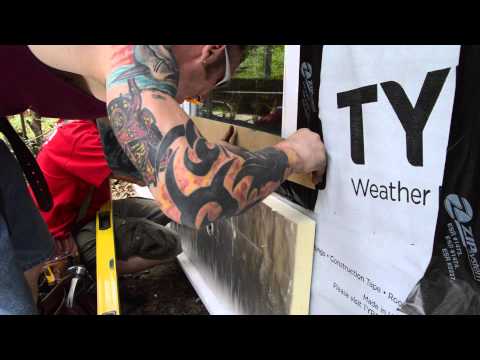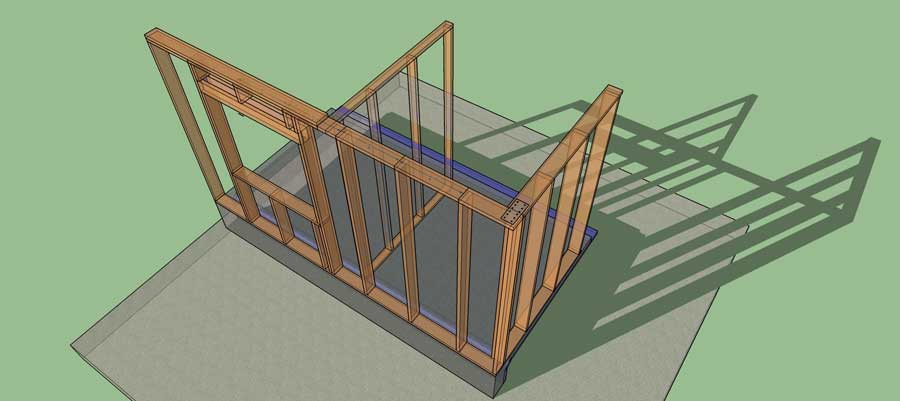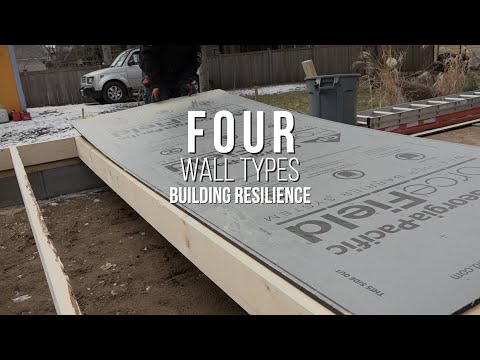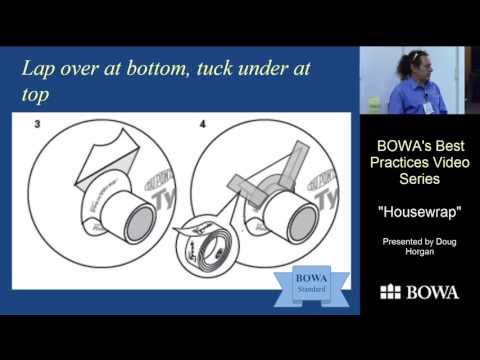Sound is energy. Stopping sound usually means absorbing it with mass
Installing a sound barrier is not tricky, but as part of an isolation project, it requires attention to detail. A 1% opening in a wall loses 50% of the sound-deadening of the wall. The sound barrier material is 54 inches wide, so there will be some overlap in the upper and lower sheets.
Step by step:
- First, measure the length of the run you will be covering.
- Using the utility knife, cut the sound barrier to size. We typically use an 8-foot flat bar to guide the cut. You do not have to cut entirely through the material. After you score it, you can separate it by tearing it apart.
- Since the material weighs 1 pound per square foot, you will need two people to lift the sheet and hold it in place. Get the sound barrier lined up and make sure you are square at the top and right edge.
- Shoot in a few staples to help support the material. You will need to get enough staples into the corner to hold it, or the vinyl will tear at the staple and fall down.
- Shoot a staple about every eight inches to secure the barrier to the wall.
- Next is the installation of the acoustical fire stop putty pads. These are designed to reduce leakage around electrical outlets or other sound penetration. Peel the protective layer away from the putty and pack it around the outlet box. The putty is also protection against fires in the wall cavities.
- Next, we will show how the sound barrier is cut around outlets to protect the integrity of the acoustical seal around the outlet.
- Finally, after we have cut the barrier to a tight fit, we caulk around the perimeter with acoustical sealant.
- Remember, the 1% rule, and follow this method around the rest of the wall.
The key to success in isolating a room is attention to detail, and having an adequate mass to block the amount of energy you desire.
Editor's note: Yes, it is a bit of a rough transcript and grainy video, but it has pretty useful content.











